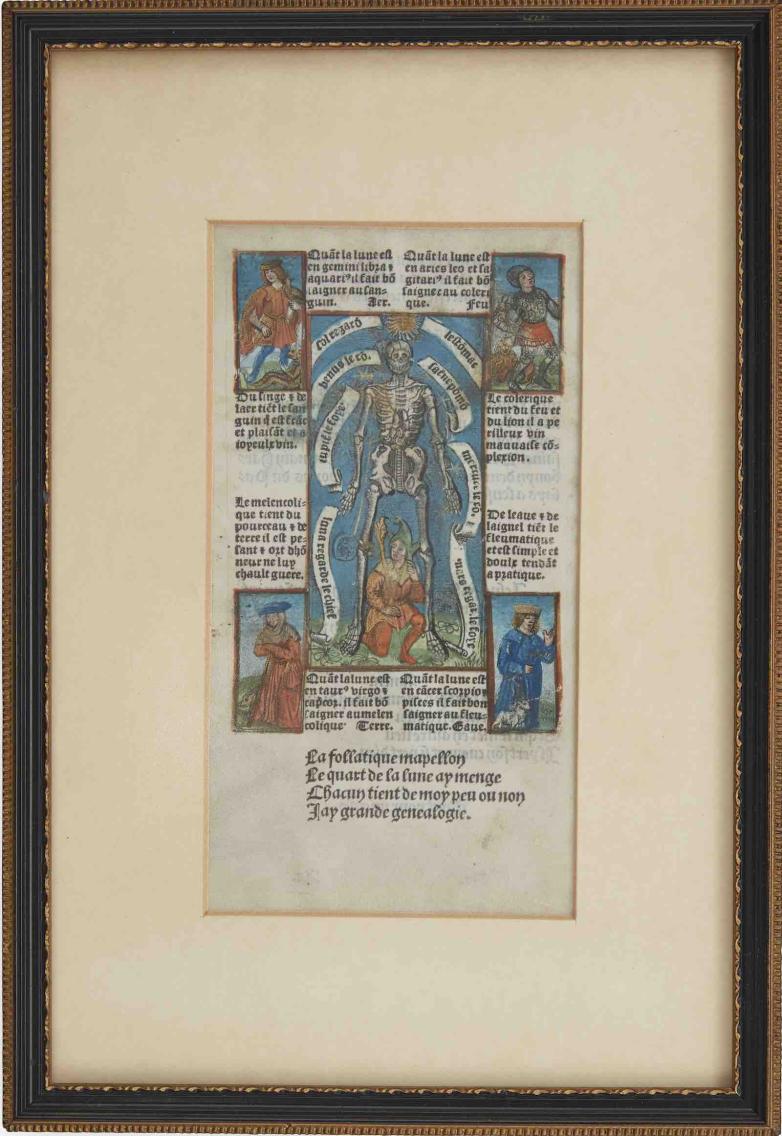16th Century Zodiac Man Illuminated Manuscript at Roseberys

Zodiac Man manuscript
Printed by Hardouin, Germain, and Gillet, Homo anatomicus - or Zodiac Man - is an illuminated manuscript in French, drawn from the Book of Hours. It comes up for auction at Roseberys London on June 4 as part of The George Farrow Collection, focusing on the collector’s lifelong passion for art and antiques.
With a depiction of the ‘anatomical man’ as a skeleton, the illuminated manuscript page on vellum provides information about the humours, the zodiac, and the best time for bleeding.
During the late 15th and early 16th centuries printers often borrowed stylistically from manuscripts and used vellum and colourful illuminations to increase the cachet of printed books. In France, this trade was dominated by the Hardouin brothers, who were active between 1510 and 1550. Gillet was a printer, and unusually, all the illuminations were overseen in-house by his brother Germain, who was registered with the Guild of Illuminators.
The 'Homo anatomicus', bloodletting man, or zodiac man, was a type of diagram that codified the relationship between the microcosm of the human body and the divine macrocosm. It had its origin in classical thought and was a feature of European and Middle Eastern books of hours, almanacs, and medical texts throughout the Middle Ages and Renaissance. The provenance is unclear prior to it entering the George Farrow Collection. It goes under the hammer with an estimate of £200 - £300.
"Roseberys is thrilled to have the opportunity bring such an extraordinary single owner collection to the market," said Anna Evans, Head of Sale at Roseberys London. "The collection is remarkable, not only in its scholarly and historical breadth, but also because of its quality and exceptional state of preservation."
















